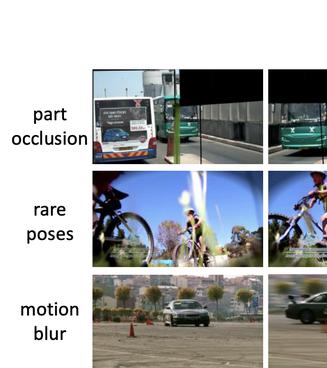Weakly-supervised Learning of Mid-level Features for Pedestrian Attribute Recognition and Localization
State-of-the-art methods treat pedestrian attribute recognition as a multi-label image classification problem. The location information of person attributes is usually eliminated or simply encoded in the rigid splitting of whole body in previous work. In this paper, we formulate the task in a weakly-supervised attribute localization framework. Based on GoogLeNet, firstly, a set of mid-level attribute features are discovered by novelly designed detection layers, where a max-pooling based weakly-supervised object detection technique is used to train these layers with only image-level labels without the need of bounding box annotations of pedestrian attributes. Secondly, attribute labels are predicted by regression of the detection response magnitudes. Finally, the locations and rough shapes of pedestrian attributes can be inferred by performing clustering on a fusion of activation maps of the detection layers, where the fusion weights are estimated as the correlation strengths between each attribute and its relevant mid-level features. Extensive experiments are performed on the two currently largest pedestrian attribute datasets, i.e. the PETA dataset and the RAP dataset. Results show that the proposed method has achieved competitive performance on attribute recognition, compared to other state-of-the-art methods. Moreover, the results of attribute localization are visualized to understand the characteristics of the proposed method.
PDF Abstract







 PETA
PETA
 RAP
RAP